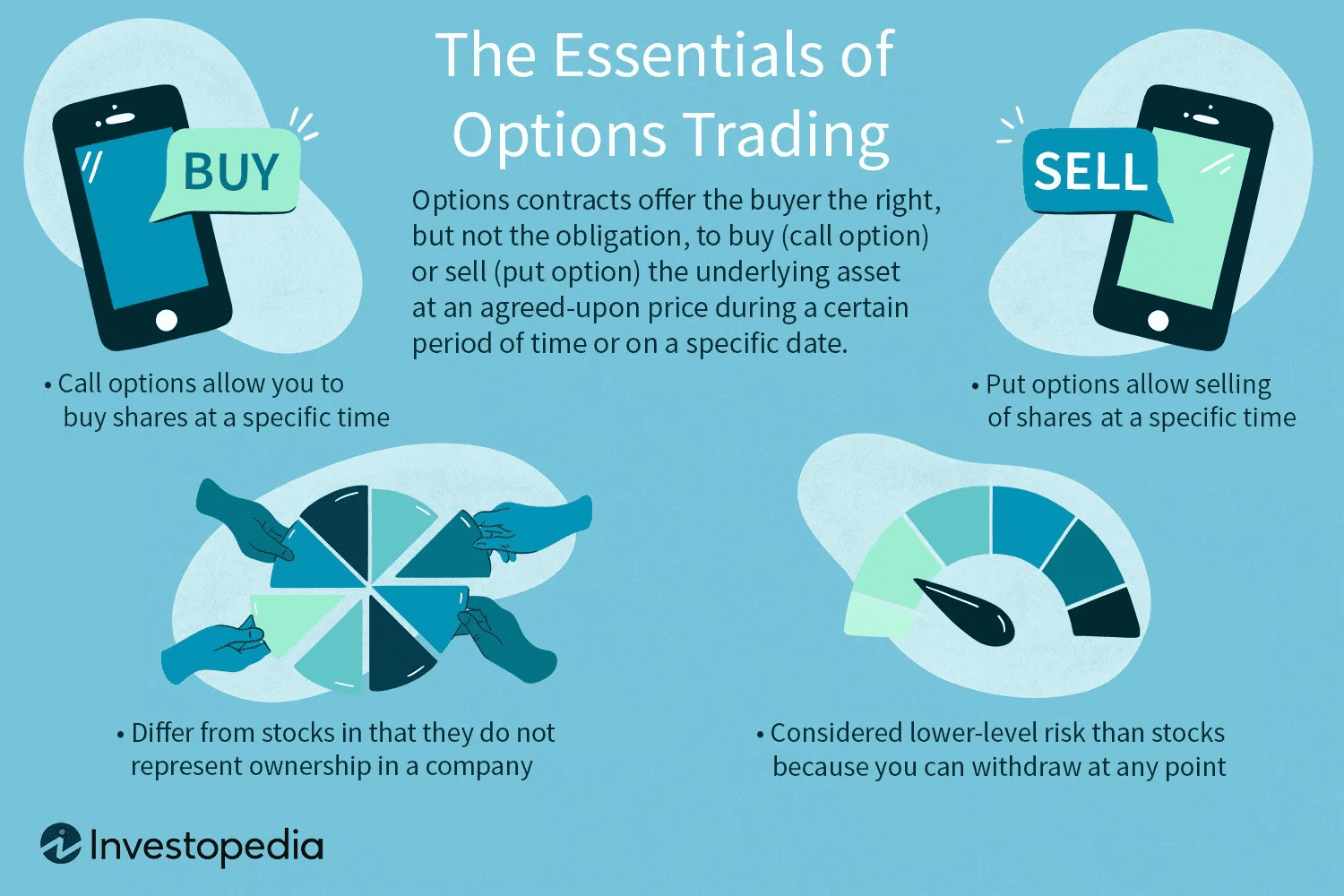Options trading can be an exciting and profitable way to participate in the stock market, but it comes with significant risks—especially for beginners. Before placing your first trade, it’s essential to understand some foundational strategies that can help manage risk while maximizing potential returns.
Here are the top 5 options trading strategies every beginner should learn:
1. Covered Call
Best for: Investors who own stocks and want to generate extra income.
A covered call involves selling a call option on a stock you already own. This strategy generates premium income while capping your upside potential if the stock rises above the strike price.
How it Works:
-
You own 100 shares of XYZ stock at $50.
-
You sell a call option with a $55 strike price for a $2 premium.
-
If XYZ stays below $55, you keep the premium.
-
If XYZ rises above $55, your shares may get called away at $55, but you still keep the premium.
Pros:
✔ Extra income from premiums
✔ Lower risk than naked calls
Cons:
✖ Limits upside potential
2. Protective Put (Married Put)
Best for: Traders who want downside protection on a stock they own.
A protective put acts as an insurance policy for your stock position. You buy a put option to hedge against potential losses.
How it Works:
-
You own 100 shares of ABC stock at $100.
-
You buy a $95 put option for $3 per share.
-
If ABC drops below $95, your losses are limited.
-
If ABC rises, you only lose the premium paid for the put.
Pros:
✔ Limits downside risk
✔ Lets you benefit from stock appreciation
Cons:
✖ Cost of put reduces overall profit
3. Long Call (Directional Bullish Bet)
Best for: Traders who are bullish on a stock but want limited risk.
A long call gives you the right (but not the obligation) to buy a stock at a set price before expiration.
How it Works:
-
You buy a call option on XYZ with a $50 strike for $3.
-
If XYZ rises above $53 ($50 + $3 premium), you profit.
-
If XYZ stays below $50, you lose only the premium.
Pros:
✔ High leverage with limited risk
✔ Unlimited profit potential
Cons:
✖ Time decay works against you
4. Cash-Secured Put
Best for: Traders who want to buy a stock at a discount.
A cash-secured put involves selling a put option while setting aside enough cash to buy the stock if assigned.
How it Works:
-
You sell a put option on XYZ at a $45 strike for $2.
-
If XYZ stays above $45, you keep the $200 premium.
-
If XYZ drops below $45, you buy the stock at $45 (but effectively at $43 after the premium).
Pros:
✔ Earn premium income
✔ Opportunity to buy stocks at a discount
Cons:
✖ Obligation to buy the stock if assigned
5. Vertical Spread (Bull Call Spread or Bear Put Spread)
Best for: Beginners who want defined risk and reward.
A vertical spread involves buying and selling options of the same type (calls or puts) at different strike prices.
Bull Call Spread Example:
-
Buy a $50 call for $3.
-
Sell a $55 call for $1.
-
Net cost: $2 per share ($200 total).
-
Max profit: $300 ($55 – $50 = $5, minus $2 debit).
Pros:
✔ Lower cost than a long call
✔ Defined risk and reward
Cons:
✖ Limited profit potential
Final Thoughts
Options trading can be complex, but mastering these five essential strategies will help beginners trade with more confidence and discipline. Always:
✅ Start with paper trading
✅ Understand risk/reward before entering a trade
✅ Avoid over-leveraging











